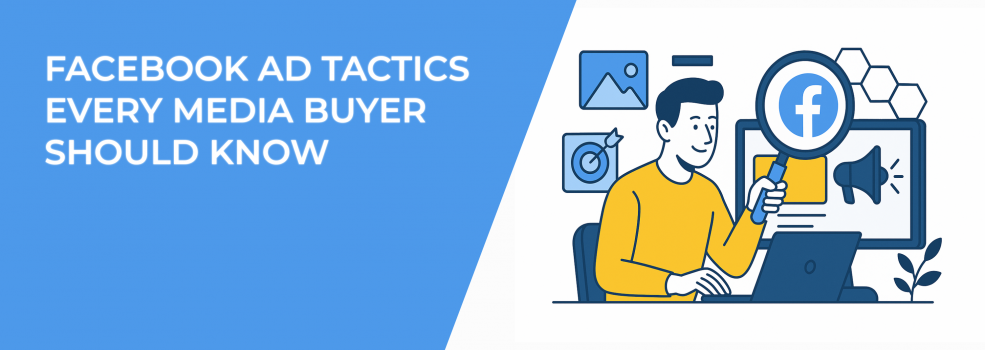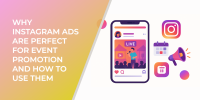Facebook advertising continues to be one of the most powerful digital marketing channels — but in 2025, it’s also more competitive than ever. If you’re a media buyer running Facebook or Instagram ads, staying ahead means knowing how to adapt to constant platform changes, algorithm shifts, and rising ad costs.
In this guide, we’ll break down essential Facebook ad tactics every media buyer should know, with actionable tips to help you optimize your strategy, increase conversions, and scale faster.
Let’s dive into what’s working — and how you can apply it today.
1. Let Facebook's Algorithm Do the Heavy Lifting
Stop over-targeting. Facebook’s machine learning works best when it has a large, flexible audience to learn from.
What to do instead:
-
Use broad targeting — set only age, gender, and location.
-
Avoid stacking interest layers unless you're in early testing.
-
Set your campaign objective based on the most valuable action (e.g. “Purchases” or “Leads”).
Why it works: broad targeting allows Facebook to optimize delivery based on real-time conversion data, not static interest categories. Over time, your cost per result often drops as the algorithm gets smarter.
But keep in mind — broad targeting doesn’t work for everyone all the time. If your product serves a niche audience, or if you have limited conversion data, the algorithm may struggle to find the right people quickly. In those cases, start with lightly layered interests, custom or lookalike audiences, then test broad as you scale.
Try this: launch a broad ad set with 3–4 creative variations. Let it run for 5–7 days and compare performance to your narrow targeting setup. Watch for trends in CPM, CTR, and cost per result — and don’t be afraid to pivot if the algorithm isn’t catching on fast enough.
2. Make Your Creative Do the Targeting
In 2025, your ad creative is your best targeting tool. Facebook now uses content signals — like colors, tone, and video pacing — to match ads with users most likely to engage.
Tips for creative strategy:
-
Design ads for different buyer mindsets: emotional, logical, aspirational.
-
Use direct-response UGC (user-generated content) formats to build trust fast.
-
Keep videos short (15–30 seconds) with captions and clear CTAs.
Want better results? Refresh creative assets every 2–3 weeks. Facebook rewards freshness, and your audience avoids ad fatigue.
Test this: run one ad with product-focused messaging and another with storytelling. See which format drives lower CPA and higher engagement.
3. Simplify Your Campaign Structure
Complex campaign structures are outdated. Simpler = stronger.
Facebook's current algorithm favors consolidated campaigns, where more data can flow into fewer ad sets.
Recommended setup:
-
1 campaign per funnel stage (cold, warm, retargeting),
-
1–2 ad sets per campaign,
-
3–5 high-quality creative variations per ad set.
Why this matters: consolidation allows faster learning and better budget distribution across top-performing ads.
Quick win: pause underperforming ad sets. Merge winners into a single, broader audience to accelerate learning.
Want to grow faster without hurting ROAS? Learn the science behind scaling Facebook ads effectively.
4. Retarget Smarter — Not Harder
Retargeting has changed. With smaller custom audiences due to privacy updates, you need to build retargeting strategies that rely on on-platform engagement.
Top-performing retargeting tactics in 2025:
-
Retarget video viewers (25%+ watch time),
-
Retarget people who engaged with your Facebook or Instagram page,
-
Use dynamic product ads (DPA) if you have a catalog.
Bonus tip: change your messaging for retargeted users. They’ve seen your brand — now give them a reason to convert.
Example ad: “Still comparing? See why 3,000+ customers made the switch.” Include social proof or a limited-time discount.
5. Optimize for High-Value Events
If you’re only optimizing for “Purchases” or “Leads,” you're missing an opportunity.
Facebook’s algorithm thrives on value-based signals — actions that tell the system who brings more revenue or qualifies better.
Try optimizing for:
-
Add to Cart,
-
Initiate Checkout,
-
High-quality leads (with custom event values),
-
Subscription starts or upgrades (if applicable).
How to do it: set up custom conversions using event parameters like purchase amount, lead score, or customer tier.
Pro tip: pass value data into your pixel events. This helps Facebook prioritize users likely to bring better LTV (lifetime value).
6. Read the Patterns, Not Just the Metrics
It’s easy to get lost in CTR, ROAS, and CPA. But smart media buyers look for behavioral patterns, not just daily results.
What to monitor:
-
Which creative format consistently performs better?
-
What time of day brings the most conversions?
-
Are weekends tanking your CPA?
Track weekly trends. Compare audience behavior over time. Use automated rules to pause or scale based on performance thresholds.
Bonus move: use Facebook’s breakdown reports (by age, device, or placement) to spot hidden trends.
Still not seeing the results you expected? Here's a deeper look at why your Facebook ads might not be converting and how to troubleshoot.
7. Feed the Algorithm — Don’t Fight It
Facebook ads work best when you help the system learn faster.
Give Facebook the data it needs:
-
Use the Conversions API + Pixel to maximize signal quality.
-
Send complete funnel data (not just the last click).
-
Run campaigns for at least 5–7 days before making big changes.
Avoid resetting learning: Don’t constantly edit ads. Test changes in new ad sets to preserve performance history.
Smart tip: use campaign budget optimization (CBO) when scaling. It lets Facebook move budget toward the best-performing ad sets automatically.
For faster optimization, learn how to exit the Facebook learning phase more quickly without wasting ad spend.
Final Thoughts: Facebook Ads in 2025 Require Smarter Execution
To succeed with Facebook ads in 2025, media buyers need to think more like strategists and less like technicians.
The key tactics are clear:
-
Use broad targeting and smart creative to guide delivery.
-
Simplify your structure to boost learning and lower costs.
-
Optimize based on value, not just conversions.
-
Stay focused on patterns and behavior trends.
By following these Facebook ad tactics, you’ll not only improve your ROAS — you’ll build more scalable, predictable campaigns that adapt with the platform.
So ask yourself: are your ads helping Facebook find the right people? Or are you still stuck doing all the heavy lifting?
The answer could be the difference between an ad account that survives and one that scales.

